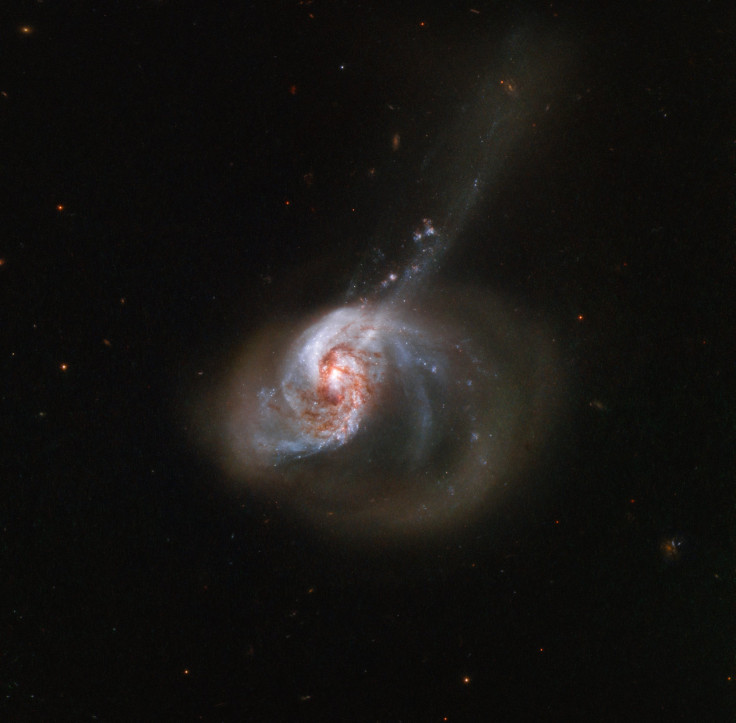Hubble Captures Image Of Galaxy Formed By Cosmic Collision

KEY POINTS
- Hubble Space Telescope snapped a photo of a barred spiral galaxy
- NGC 1614 was created by a galactic merger
- The collision led to an outburst of star formation in NGC 1614
The Hubble Space Telescope, which is operated by NASA and the European Space Agency, snapped a photo of a galaxy that was formed through a merger of two galactic structures. The cosmic collision that caused the merger resulted in the outburst of star formation in the galaxy.
The cosmic structure that appeared in Hubble’s latest photo has been identified as NGC 1614, which is a galaxy located in the constellation Eridanus and lies about 211 million light-years away from Earth’s neighborhood, Sci News reported.
NGC 1614 was first discovered on Dec. 29, 1885, by American astronomer Lewis Swift. After follow-up observations, NGC 1614 was classified as a barred spiral galaxy, which means it has a central bar-shaped structure filled with star formations running across it.
According to NASA, NGC 1614 was formed following the merger of two galaxies. As the two galaxies collided into one another, the interstellar gas cloud from one of the cosmic objects interacted with the other galaxy’s core.
This interaction resulted in the sudden burst of star formation that extends beyond the main structure of NGC 1614. In Hubble’s photo, this appears as the faint cloud of stellar material extending from the galaxy’s central feature.
Aside from the formation of new stars, the merger also created some of NGC 1614’s notable features.
“NGC 1614 is the result of an active galactic merger, which creates its peculiar appearance, including a tidal tail,” NASA explained in a statement. “The cosmic collision also drives a turbulent flow of interstellar gas from the smaller of the two galaxies involved into the nucleus of the larger one, resulting in a burst of star formation that started in the core and has slowly spread outward through the galaxy.”
Due to the sudden star formation caused by NGC 1614’s violent past, astronomers classified the massive cosmic structure as a luminous infrared galaxy. According to NASA, this type of galaxy is one of the brightest cosmic bodies surrounding Earth.
“Luminous infrared galaxies are among the most luminous objects in the local universe — and NGC 1614 is, in fact, the second most luminous galaxy within 250 million light-years,” NASA stated.
© Copyright IBTimes 2025. All rights reserved.





















